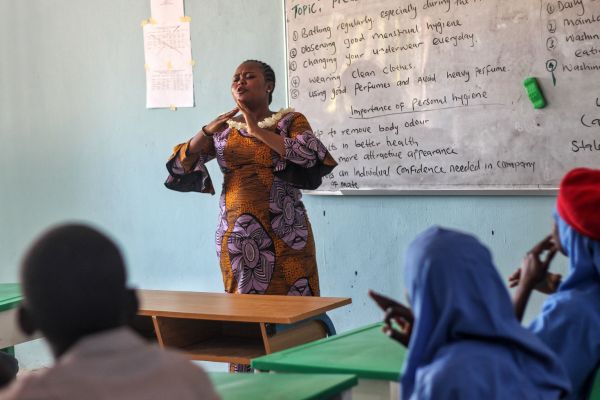Teaching Jobs in Australia with Visa Sponsorship: The Ultimate Guide for Educators
Introduction: Your Path to Teaching in Australia
Australia stands as one of the world’s most sought-after destinations for international educators seeking new opportunities abroad. With its high-quality education system, competitive salaries, excellent work-life balance, and stunning natural landscapes, Australia offers foreign teachers an exceptional professional and personal experience. However, navigating the complexities of finding teaching positions that offer visa sponsorship requires specialized knowledge and preparation.
This comprehensive guide aims to provide international teachers with everything they need to know about securing teaching jobs in Australia with visa sponsorship. From understanding the Australian education landscape and visa requirements to identifying in-demand teaching specializations and crafting successful applications, we cover all aspects of this exciting career move.
Whether you’re an experienced educator looking for new horizons or a newly qualified teacher seeking international experience, this guide will help you navigate the path to teaching Down Under with confidence and clarity.
The Australian Education System: An Overview
Structure and Governance
Australia’s education system enjoys an excellent global reputation, consistently ranking among the world’s best in international assessments. The system is structured across several tiers:
Early Childhood Education (0-5 years) encompasses childcare centers, preschools, and kindergartens. While not compulsory, these programs provide essential foundations for learning.
Primary Education (typically ages 5-12, Years K-6) focuses on developing fundamental skills in literacy, numeracy, sciences, humanities, arts, and physical education.
Secondary Education (typically ages 12-18, Years 7-12) builds upon primary foundations while introducing more specialized subjects and preparing students for further education or employment.
Tertiary Education includes vocational education and training (VET) institutions and universities, offering a range of qualifications from certificates to doctoral degrees.
Education in Australia operates under a federal system where both the Commonwealth (national) government and state/territory governments share responsibilities. While the national government provides funding and sets broad policy directions, each state and territory maintains significant autonomy in curriculum development, assessment practices, and school administration.
Public vs. Private Schools
Australia’s school system comprises three main sectors:
Government (Public) Schools are operated by state and territory education departments, providing free education to all students (though voluntary contributions for materials and activities are common). These schools educate approximately 65-70% of Australian students.
Catholic Schools form part of the non-government sector but operate within a systemic network with more affordable fees than independent schools. They educate roughly 20% of Australian students.
Independent Schools include a diverse range of institutions with various religious affiliations, educational philosophies, or specialized focuses. These schools typically charge higher fees and educate approximately 10-15% of students.
For international teachers, all three sectors offer potential employment opportunities with visa sponsorship, though requirements and processes may differ.
Academic Calendar and Teaching Hours
The Australian school year typically runs from late January to mid-December, divided into four terms of approximately 10 weeks each, with breaks between terms. The major summer holiday occurs during December-January.
Teaching hours generally span from around 8:30 AM to 3:30 PM, Monday through Friday, though teachers are expected to be available for additional duties such as planning, assessment, professional development, and parent meetings outside these hours.
In-Demand Teaching Specializations in Australia
Australia experiences teacher shortages in specific subject areas and geographical regions, creating opportunities for international educators with relevant qualifications and experience. Understanding where the demand lies can significantly increase your chances of securing visa sponsorship.
Subject Areas with Critical Shortages
Mathematics and Sciences: Physics, chemistry, biology, and general science teachers remain in high demand across Australia, particularly at the secondary level. The focus on STEM education has intensified this need.
Technology and Digital Literacy: As Australia emphasizes preparing students for a digital future, teachers with expertise in information technology, digital media, coding, and related fields are increasingly sought after.
Special Education: Educators qualified to work with students with disabilities or learning differences are in persistent demand across all states and territories.
English as an Additional Language (EAL/ESL): With Australia’s culturally diverse population, teachers skilled in supporting students from non-English speaking backgrounds are valuable assets to many schools.
Languages Other Than English (LOTE): Particularly Asian languages like Mandarin, Japanese, and Indonesian, reflecting Australia’s increasing engagement with Asia.
Industrial Technology and Design: Teachers qualified in areas such as woodwork, metalwork, engineering, and design technology remain difficult to recruit domestically.
Regional and Remote Opportunities
While major cities like Sydney, Melbourne, and Brisbane offer numerous teaching positions, the most accessible opportunities for visa sponsorship often exist in regional, rural, and remote areas where teacher shortages are more acute.
Northern Territory, Western Australia, and Queensland frequently sponsor international teachers for remote and regional schools, offering additional incentives such as subsidized housing, relocation allowances, and accelerated career advancement.
The Australian government’s Regional Certifying Bodies can provide additional pathways for permanent residency for teachers willing to work in designated regional areas, making these positions particularly attractive for those seeking long-term settlement.
Early Childhood Education
Recent policy initiatives have expanded early childhood education across Australia, creating increased demand for qualified early childhood teachers. International educators with appropriate qualifications in this field can find numerous opportunities, particularly in regional areas.
Visa Options for International Teachers
Navigating Australia’s visa system is a critical aspect of securing teaching employment. Several visa pathways exist for international educators:
Temporary Skill Shortage (TSS) Visa (Subclass 482)
This is the primary visa for sponsored skilled workers, replacing the former 457 visa program. For teachers, it comes in two streams:
Short-Term Stream: Valid for up to two years (or four years for certain countries with trade agreements with Australia), but with limited pathways to permanent residency.
Medium-Term Stream: Valid for up to four years with potential pathways to permanent residency after three years. Teaching occupations typically fall under this stream.
Requirements include:
- Nomination by an approved sponsor (typically your employing school or education department)
- Meeting skills requirements for the nominated occupation
- At least two years of relevant work experience
- Meeting English language proficiency requirements (generally IELTS score of at least 5.0 overall with no band less than 5.0)
- Meeting health and character requirements
- Being under 45 years of age (with some exceptions)
Skilled Independent Visa (Subclass 189)
This points-based visa allows qualified teachers to live and work in Australia without employer sponsorship. Points are awarded based on factors including age, English language proficiency, work experience, and qualifications. However, competition for this visa is high, and teaching must be on the relevant skilled occupation list at the time of application.
Skilled Nominated Visa (Subclass 190)
Similar to the independent visa but requires nomination by a state or territory government. Different states prioritize different teaching specializations based on their specific needs. This visa can be an excellent option for teachers with specializations in high demand in particular states or territories.
Regional Sponsored Migration Scheme (Subclass 187)
This visa specifically targets regional areas of Australia and may offer a more accessible pathway for teachers willing to work outside major metropolitan centers. It provides permanent residency and requires employer sponsorship.
Working Holiday Visa (Subclass 417) or Work and Holiday Visa (Subclass 462)
For eligible candidates (typically aged 18-30 or 18-35 depending on country agreements), these visas can provide a pathway to gain Australian teaching experience and potentially transition to more permanent arrangements. While not specifically designed for professional employment, they allow work for up to 12 months with any single employer and can be extended under certain conditions.
Student Visa (Subclass 500) with Pathway to Post-Study Work Visa
International educators may consider pursuing relevant Australian qualifications that lead to teacher registration, followed by a Post-Study Work visa (Subclass 485) allowing work rights for 2-4 years depending on the qualification level.
Teacher Registration Requirements in Australia
All teachers in Australia must obtain registration or accreditation with the relevant authority in the state or territory where they intend to work. This process verifies qualifications, language proficiency, and suitability for teaching.
National Framework with State Variations
While the Australian Institute for Teaching and School Leadership (AITSL) provides national guidelines for teacher registration, each state and territory maintains its own registration body:
- Victorian Institute of Teaching (VIT) – Victoria
- NSW Education Standards Authority (NESA) – New South Wales
- Queensland College of Teachers (QCT) – Queensland
- Teachers Registration Board of South Australia – South Australia
- Teacher Registration Board of Western Australia – Western Australia
- Teachers Registration Board of Tasmania – Tasmania
- Teacher Quality Institute (TQI) – Australian Capital Territory
- Teacher Registration Board of the Northern Territory – Northern Territory
Common Registration Requirements
Despite jurisdictional differences, common requirements include:
Qualification Assessment: International teaching qualifications must be assessed for equivalence to Australian standards. AITSL typically conducts these assessments, comparing your qualifications against Australian standards for initial teacher education.
English Language Proficiency: Most states require evidence of English proficiency through tests like IELTS (Academic) with minimum scores typically around 7.0-8.0 in all bands, though exact requirements vary by jurisdiction.
Criminal History Checks: Both from Australia and your home country/countries where you’ve lived for significant periods.
Working with Children Checks: Mandatory screening to ensure suitability for working with young people.
Evidence of Teaching Experience: Documentation of previous teaching experience, particularly important for gaining full rather than provisional registration.
Professional References: Supporting your application from previous employers or professional colleagues.
Provisional vs. Full Registration
Many international teachers initially receive provisional registration, allowing them to teach while completing additional requirements for full registration. These may include supervised teaching practice, professional development activities, and demonstration of the Australian Professional Standards for Teachers.
Finding Teaching Positions with Visa Sponsorship
Securing a teaching position with visa sponsorship requires strategic approaches and understanding of the Australian education employment landscape.
Government Department Recruitment Programs
Several state and territory education departments run international recruitment programs specifically designed to address teacher shortages:
New South Wales: The NSW Department of Education regularly recruits overseas-trained teachers for public schools through targeted campaigns, offering sponsorship for in-demand subject areas.
Queensland: Education Queensland International (EQI) recruits teachers for state schools, particularly in regional and remote areas.
Northern Territory: The NT Department of Education actively recruits internationally, offering attractive remuneration packages for remote schools.
Western Australia: The WA Department of Education periodically conducts international recruitment drives, particularly for regional positions.
These programs often streamline the visa and registration processes, making them excellent entry points for international educators.
Catholic and Independent School Networks
Catholic education offices in various states and territories frequently sponsor international teachers, particularly for subjects with critical shortages. Similarly, independent school associations may facilitate sponsorship for member schools.
The Catholic sector, with its large network of schools, often has more established processes for international recruitment and sponsorship than individual independent schools.
Education Recruitment Agencies
Specialized education recruitment agencies with expertise in international placements can be invaluable resources. Reputable agencies include:
- Smart Teachers
- Anzuk Education
- Randstad Education
- Protocol Education Australia
- Teaching Jobs Australia
These agencies understand visa requirements and can match your qualifications and experience with appropriate positions offering sponsorship.
Online Job Platforms and Resources
Key platforms for teaching positions include:
- Seek.com.au (Australia’s largest job site)
- Teachers.on.net
- Teach.NSW, Teach.QLD, and other state-specific portals
- Education HQ Jobs
- The Australian schools directory (for direct applications)
When searching these platforms, use filters or search terms like “visa sponsorship,” “international applicants,” or “482 visa” to identify suitable opportunities.
Networking and Professional Associations
Professional connections can be tremendously valuable. Consider joining:
- Australian Education Union (AEU)
- Independent Education Union (IEU)
- Subject-specific associations relevant to your teaching area
- LinkedIn groups for international teachers in Australia
These networks can provide insider information about unadvertised positions and schools known for sponsoring international educators.
Understanding Salary and Benefits for Teachers in Australia
Australian teaching positions typically offer competitive compensation packages, though these vary by state, sector, and experience level.
Public School Salary Structures
Government school salaries are determined by enterprise agreements negotiated between education departments and teacher unions. As of 2024-2025, approximate salary ranges (in Australian dollars) for classroom teachers are:
- Beginning teachers: $75,000 – $85,000
- Experienced teachers: $90,000 – $110,000
- Highly accomplished/lead teachers: $110,000 – $130,000
- Leadership positions (e.g., Department Head): $120,000 – $150,000
- Principals: $150,000 – $200,000+
These figures vary by jurisdiction, with the Northern Territory, Western Australia, and Australian Capital Territory typically offering higher starting salaries.
Catholic and Independent School Compensation
Catholic systemic schools generally align their salaries with public school rates, sometimes with slight variations based on local agreements.
Independent schools set their own salary structures, which may be higher than public rates for teachers with specialized skills or experience. Some prestigious independent schools offer significantly higher compensation to attract top talent.
Additional Benefits and Allowances
Beyond base salary, teachers in Australia may receive:
Superannuation (retirement fund) contributions: Employers contribute an additional 11% (increasing to 12% by 2025) of base salary.
Relocation assistance: Particularly for regional and remote positions, covering travel and moving expenses.
Housing subsidies: Common in remote areas, ranging from subsidized rent to fully provided accommodation.
Additional location allowances: For remote or high-cost areas, potentially adding $3,000-$20,000 annually depending on remoteness.
Professional development funding: Supporting continuous learning and career advancement.
Regional and Remote Incentives
Teachers accepting positions in regional, rural, and remote locations often receive substantial additional benefits:
Accelerated promotion opportunities Higher retention bonuses Additional leave entitlements Subsidized utilities Tax benefits through zone allowances Faster pathways to permanent residency
These incentives make regional positions particularly attractive for international teachers seeking both financial benefits and visa advantages.
Cost of Living Considerations
While Australian teacher salaries are competitive internationally, living costs vary significantly across the country:
Major cities like Sydney and Melbourne have high housing costs, partially offsetting higher salaries.
Regional and rural areas generally offer more affordable living, allowing teachers to save more despite potentially lower base salaries in some cases.
Typical monthly expenses for a single teacher might include:
- Rent: $1,800-$3,000 in major cities; $1,000-$1,800 in regional areas
- Utilities: $200-$400
- Internet and mobile: $100-$200
- Groceries: $400-$800
- Transportation: $150-$400
- Health insurance: $100-$200 (mandatory for many visa holders)
Preparing Your Application for Australian Teaching Positions
Creating compelling applications tailored to Australian expectations is crucial for securing teaching opportunities with visa sponsorship.
Understanding Australian Educational Values
Successful applications demonstrate alignment with core Australian educational principles:
Student-centered approaches emphasizing differentiated instruction Evidence-based teaching practices Integration of technology in learning Cultural inclusivity and respect for Australia’s First Nations peoples Collaborative professional practice Commitment to ongoing professional development Environmental sustainability and global citizenship
Reference these values in your application materials, providing specific examples from your teaching experience that illustrate your alignment with these principles.
Required Documentation
Prepare comprehensive documentation including:
Curriculum Vitae/Resume: Formatted according to Australian expectations with chronological work history, qualifications, and clear contact information.
Cover Letter: Customized for each position, addressing specific selection criteria and explaining why you’re seeking opportunities in Australia.
Statement Addressing Selection Criteria: Many Australian schools, particularly in the public sector, require detailed responses to specific selection criteria.
Qualification Documents: Original academic transcripts and teaching qualifications with certified translations if not in English.
AITSL Assessment: Evidence of qualification assessment by the Australian Institute for Teaching and School Leadership.
Teacher Registration Evidence: From your home country/region.
English Language Test Results: IELTS or equivalent meeting required standards.
Referee Reports: From supervisors familiar with your recent teaching practice.
Working with Children Check/Police Clearances: From your home country.
Evidence of Right to Work: Current visa status or eligibility for sponsorship.
Addressing Selection Criteria Effectively
Selection criteria responses are often decisive in Australian education recruitment. These detailed statements require:
The STAR Method (Situation, Task, Action, Result) for structuring responses Specific evidence from your teaching practice Quantifiable outcomes where possible Alignment with the Australian Professional Standards for Teachers Clear connections between your experience and the school’s needs
For example, rather than simply stating “I use differentiated instruction,” provide a specific case study of how you identified diverse learning needs, developed targeted strategies, implemented them, and measured the improved outcomes.
Interview Preparation
Australian teaching interviews often involve multi-stage processes:
Initial screening: Often conducted remotely via phone or video conference Panel interview: Typically involving school leadership, faculty representatives, and sometimes parent/community members Teaching demonstration: Either in-person or via video submission
Prepare for common questions focusing on:
- Classroom management approaches
- Assessment and data-driven instruction
- Collaboration with colleagues and parents
- Supporting diverse learners
- Cultural sensitivity and inclusion
Research the specific school, its demographic profile, strategic priorities, and pedagogical approaches before your interview. Reference this information in your responses to demonstrate genuine interest.
Settling into the Australian Teaching Environment
Transitioning successfully into the Australian education system involves understanding professional expectations, cultural nuances, and practical considerations.
Professional Culture in Australian Schools
Australian schools generally maintain:
Collaborative approaches with substantial team planning and professional learning communities Relatively flat hierarchies with accessible leadership Strong emphasis on work-life balance compared to many countries Expectation of contribution to extracurricular activities and school life Regular professional development requirements Focus on evidence-based practice and continuous improvement Strong parent/community engagement Cultural inclusivity reflecting Australia’s diverse population
Classroom Management Expectations
Australian approaches to student behavior management typically emphasize:
Positive behavior support frameworks over punitive measures Restorative justice principles for addressing conflicts Strong teacher-student relationships as foundations for engagement Clear, consistently applied expectations Student voice and agency in establishing classroom norms Trauma-informed practices recognizing diverse student backgrounds Differentiated approaches acknowledging neurodiversity Partnership with families in supporting student well-being
Understanding these approaches is crucial, as some international teachers find Australian classroom management philosophies differ significantly from their home country experiences.
Curriculum and Assessment Frameworks
Familiarize yourself with:
The Australian Curriculum: The national framework covering eight learning areas, seven general capabilities, and three cross-curriculum priorities
State/Territory Variations: Local adaptations and implementations of the national curriculum
NAPLAN (National Assessment Program – Literacy and Numeracy): Standardized testing in Years 3, 5, 7, and 9
Senior Secondary Certificates: Including VCE (Victoria), HSC (NSW), QCE (Queensland), WACE (Western Australia), SACE (South Australia/Northern Territory), and TCE (Tasmania)
Continuous assessment practices balancing formative and summative approaches
Practical Settlement Considerations
Beyond professional adaptation, practical elements of relocation include:
Banking: Opening an Australian bank account (possible from overseas with major banks)
Healthcare: Understanding Medicare (if eligible) or arranging private health insurance (mandatory for most visa holders)
Taxation: Obtaining a Tax File Number and understanding teacher-related deductions
Housing: Securing appropriate accommodation (often requiring rental history references)
Transportation: Navigating public transport options or vehicle purchase/registration
Mobile and Internet Services: Establishing communications essential for job applications
Cultural Orientation: Understanding Australian social norms and workplace culture
Many schools sponsoring international teachers provide settlement assistance packages, potentially including temporary accommodation, orientation programs, and mentoring partnerships with established colleagues.
Career Advancement and Permanent Residency Pathways
For many international teachers, Australian positions represent not just immediate employment but potential long-term career and migration opportunities.
Career Progression in Australian Education
The Australian teaching career structure offers multiple advancement pathways:
Classroom Teacher Progression: Through incremental salary bands based on experience and demonstrated proficiency against professional standards
Highly Accomplished and Lead Teacher (HALT) Certification: Formal recognition of advanced practice, bringing increased responsibility and remuneration
Specialized Roles: Including year-level coordination, subject leadership, student well-being, and curriculum development
School Leadership: Assistant principal, deputy principal, and principal positions
System Leadership: Opportunities within education departments, curriculum authorities, and regulatory bodies
Professional Learning Leadership: Roles in teacher training, mentoring, and professional development facilitation
To progress effectively, international teachers should:
Document achievement of the Australian Professional Standards for Teachers at increasingly advanced levels
Pursue relevant post-graduate qualifications at Australian institutions
Engage actively in professional associations and networks
Seek leadership responsibilities within and beyond the classroom
Contribute to school improvement initiatives and strategic planning
Pathways from Temporary to Permanent Residency
Many international teachers transition from temporary visas to permanent residency through several pathways:
Employer Nomination Scheme (Subclass 186): After typically 2-3 years on a Temporary Skill Shortage visa, employers can nominate teachers for permanent residency, particularly in areas of continued shortage.
Skilled Independent Visa (Subclass 189): Teachers accumulating sufficient points based on age, experience, qualifications, and English proficiency can apply independently.
Skilled Nominated Visa (Subclass 190): State/territory nomination provides additional points for teachers with needed specializations.
Regional Pathways: Teachers working in designated regional areas may access streamlined permanent residency pathways with lower point requirements or priority processing.
Factors enhancing permanent residency prospects include:
Teaching in subjects with persistent shortages (mathematics, sciences, languages) Working in regional or remote locations Obtaining additional Australian qualifications Achieving higher English language test scores Building relationships with supportive employers willing to provide ongoing sponsorship
Professional Development and Additional Qualifications
Australian credentials can significantly enhance both career advancement and migration prospects. Consider:
Postgraduate certificates in specialized areas (e.g., special education, ESL, educational leadership) Master’s degrees in education-related fields Additional teaching specializations through graduate diplomas Australian Teacher Performance and Development Framework accreditations
Many international teachers strategically undertake part-time study while teaching to strengthen both their professional profile and residency applications.
Challenges and Solutions for International Teachers
While teaching in Australia offers tremendous opportunities, international educators commonly face specific challenges requiring proactive strategies.
Cultural and Pedagogical Adjustment
Challenge: Adapting to differences in teaching philosophy, student-teacher relationships, and expected pedagogical approaches.
Solutions:
- Engage with professional learning communities specifically designed for international teachers
- Request a mentor teacher familiar with supporting international colleagues
- Observe experienced Australian teachers across multiple classrooms
- Participate in cultural orientation programs offered by sponsoring institutions
- Join subject-specific associations to understand Australian approaches in your field
- Maintain reflective practice journals documenting your adaptation journey
Registration and Qualification Recognition
Challenge: Navigating complex requirements for qualification recognition and teacher registration across different jurisdictions.
Solutions:
- Begin AITSL assessment processes well before applying for positions
- Consider provisional registration pathways while completing additional requirements
- Maintain comprehensive documentation of all teaching experiences and qualifications
- Research specific requirements for your intended state/territory early in the process
- Budget for potential bridging courses or additional assessments
- Connect with teacher registration authorities directly for personalized guidance
Visa Complexity and Uncertainty
Challenge: Managing visa application timelines, changing requirements, and transitional arrangements.
Solutions:
- Consider engaging registered migration agents specializing in teacher mobility
- Create contingency plans for potential processing delays
- Maintain detailed records of all application materials and correspondence
- Join forums and groups for international teachers to share current experiences
- Develop relationships with potential sponsors early in the process
- Research multiple visa pathways rather than focusing on a single option
Professional Isolation
Challenge: Feeling disconnected from familiar support networks and professional communities.
Solutions:
- Actively participate in school professional learning teams
- Join state and national teacher associations and networks
- Connect with other international educators through social media groups
- Engage with cultural communities from your home region
- Establish regular communication routines with home country colleagues
- Volunteer for school activities that build collegial relationships
Housing and Settlement
Challenge: Securing appropriate accommodation without Australian rental history or local references.
Solutions:
- Request support letters from sponsoring schools or education departments
- Consider temporary accommodations through teacher housing programs
- Offer additional bond payments where legally permitted
- Explore shared housing with other educators initially
- Investigate housing options in advance through virtual inspections
- Budget for potentially higher initial housing costs
Success Stories: International Teachers in Australia
The experiences of international educators who have successfully established teaching careers in Australia provide valuable insights for prospective applicants.
Primary School Teacher from the Philippines
Maria, originally from Manila, began her Australian journey teaching in a small town in Western Australia on a Temporary Skill Shortage visa. After three years teaching Year 3 in a school with significant Indigenous enrollment, she gained permanent residency through employer nomination.
Key success factors:
- Willingness to embrace remote location opportunities
- Development of culturally responsive teaching strategies for Indigenous students
- Active engagement with the local community beyond school
- Strategic completion of a Graduate Certificate in TESOL at an Australian university
- Participation in regional teacher retention initiatives
Her advice: “The geographical isolation was challenging initially, but the professional support and community connections made it worthwhile. The experience working with Indigenous students transformed my teaching practice in ways I couldn’t have anticipated.”
Mathematics Teacher from the United Kingdom
James left London to teach secondary mathematics in Melbourne on a working holiday visa before transitioning to employer sponsorship. Five years later, he holds a permanent position as a leading teacher specializing in VCE (Victorian Certificate of Education) mathematics.
Key success factors:
- Expertise in a critical shortage area (senior mathematics)
- Strategic progression from temporary to sponsored visa
- Completion of local qualification recognition processes
- Development of expertise in the Australian curriculum and assessment systems
- Active participation in mathematics teachers’ associations
His advice: “The Australian approach to mathematics education differs significantly from the UK system. Being open to these differences rather than trying to replicate familiar approaches was essential to my success.”
Science Teacher from South Africa
Thembi transitioned from Cape Town to regional Queensland, initially teaching junior science before progressing to a Head of Department role within four years.
Key success factors:
- Specialization in physics, a persistent shortage area
- Embracing digital teaching strategies aligned with Australian curriculum priorities
- Completing additional qualification in educational leadership at an Australian university
- Building connections with industry partners to enhance school science programs
- Mentoring early career teachers, demonstrating leadership capacity
Her advice: “Regional Queensland offered accelerated career progression I wouldn’t have found in metropolitan areas. The professional support for international teachers was exceptional, particularly in helping navigate registration requirements.”
Common Themes in Success Stories
Analysis of numerous international teacher experiences reveals common elements contributing to successful transitions:
Flexibility regarding geographical placement, particularly willingness to consider regional and remote positions Active engagement with professional learning communities Strategic acquisition of additional Australian qualifications Cultural adaptability and openness to different educational approaches Development of supportive professional and personal networks Understanding of visa pathways and proactive career planning Expertise in areas of persistent teacher shortage Engagement with the broader school community beyond classroom teaching
Future Trends in Australian Education and International Recruitment
Understanding emerging trends can help international teachers position themselves advantageously for future opportunities in Australia.
Evolving Teacher Shortage Patterns
Demographic projections indicate Australia’s teacher shortages will continue expanding through 2030, with:
Growing shortages in secondary mathematics, science, and technology subjects Emerging needs in special education and inclusive learning support Increased demand for teachers with expertise in student well-being and mental health Persistent shortages in regional, rural, and remote areas Growing demand for early childhood educators as universal preschool programs expand New specializations emerging around artificial intelligence, computational thinking, and emerging technologies
International teachers developing expertise in these areas will likely find continued sponsorship opportunities.
Policy Developments Affecting International Educators
Recent and anticipated policy changes with implications for international teachers include:
Streamlined registration processes for qualified teachers from recognized overseas systems Expanded regional migration incentives to address geographical teacher distribution Enhanced mutual recognition agreements with selected countries Development of expedited pathways for teachers in critical shortage areas Potential post-pandemic adjustments to skilled migration priority lists Greater flexibility in provisional registration arrangements for international teachers
Educational Priorities Creating Opportunities
Australia’s evolving educational priorities creating specific opportunities include:
Focus on digital literacy and technological fluency across all subject areas Emphasis on Asian languages and intercultural understanding Indigenous perspectives and reconciliation initiatives Environmental sustainability and climate education Critical and creative thinking as explicit teaching focuses STEM integration across curriculum areas Well-being and social-emotional learning integration
International teachers with expertise in these priority areas are particularly well-positioned for successful applications.
Remote and Flexible Learning Capabilities
The pandemic-accelerated adoption of remote and flexible learning approaches has created new requirements for teacher expertise in:
Blended learning design and implementation Digital assessment and feedback strategies Online engagement and relationship building Technology integration across traditional subject areas Supporting diverse learners in digital environments Virtual collaboration and communication
Experience in these areas increasingly features in selection criteria for Australian teaching positions.
Conclusion: Your Pathway to Teaching in Australia
Teaching in Australia represents a significant professional and personal opportunity for international educators. With its combination of exceptional working conditions, competitive compensation, high quality of life, and potential pathways to permanent residency, Australia’s education system continues attracting talented teachers from around the world.
The journey requires careful planning, strategic preparation, and understanding of complex visa and registration requirements. However, the experiences of thousands of successful international teachers demonstrate that with appropriate research, preparation, and flexibility, this professional transition is highly achievable.
By focusing on areas of teaching shortage, considering regional and remote opportunities, building relevant skills and qualifications, and understanding the Australian educational context, international teachers can position themselves successfully for sponsored positions.
This guide has provided comprehensive information on every aspect of securing teaching positions with visa sponsorship in Australia. By applying these insights and remaining adaptable to evolving requirements and opportunities, international educators can navigate their path to successful teaching careers in Australia.
Additional Resources for Prospective Teachers
Official Government Resources
- Department of Home Affairs: https://immi.homeaffairs.gov.au (visa information)
- Australian Institute for Teaching and School Leadership: https://www.aitsl.edu.au (qualification assessment)
- Education Services Australia: https://www.esa.edu.au (national education resources)
- Study Australia: https://www.studyaustralia.gov.au (information for international students in education)
State and Territory Education Departments
- NSW Department of Education: https://education.nsw.gov.au
- Department of Education and Training Victoria: https://www.education.vic.gov.au
- Queensland Department of Education: https://education.qld.gov.au
- Department of Education Western Australia: https://www.education.wa.edu.au
- Department for Education South Australia: https://www.education.sa.gov.au
- Department of Education Tasmania: https://www.education.tas.gov.au
- ACT Education Directorate: https://www.education.act.gov.au
- Northern Territory Department of Education: https://education.nt.gov.au
Teacher Registration Authorities
- Victorian Institute of Teaching: https://www.vit.vic.edu.au
- NSW Education Standards Authority: https://educationstandards.nsw.edu.au
- Queensland College of Teachers: https://www.qct.edu.au
- Teacher Registration Board of Western Australia: https://www.trb.wa.gov.au
- Teachers Registration Board of South Australia: https://www.trb.sa.edu.au
- Teachers Registration Board of Tasmania: https://www.trb.tas.gov.au
- ACT Teacher Quality Institute: https://www.tqi.act.edu.au
- Teacher Registration Board of the Northern Territory: https://www.trb.nt.gov.au
Professional Associations
- Australian Education Union: https://www.aeufederal.org.au
- Independent Education Union of Australia: https://www.ieu.org.au
- Australian Council for Educational Leaders: https://www.acel.org.au
- Australian College of Educators: https://www.ace.edu.au
- Australian Science Teachers Association: https://asta.edu.au
- Australian Association of Mathematics Teachers: https://aamt.edu.au
- Australian Literacy Educators’ Association: https://www.alea.edu.au
These resources provide valuable information, networking opportunities, and ongoing support for international educators at every stage of their journey to teaching in Australia.







